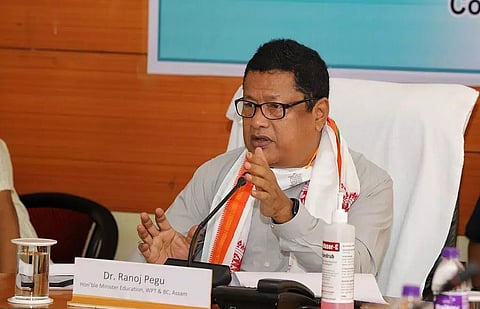
- Home
- Live Blog
- Breaking News
- Top Headlines
- Cities
- NE News
- Sentinel Media
- Sports
- Education
- Jobs

Higher pass percentage in High School Leaving Certificate and Higher Secondary Examinations in Assam this year has given rise to the problem of shortage of seats in schools and colleges. The problem also speaks volumes about the gaps in the higher education sector in the state. A high pass percentage is attributed to the evaluation system instead of final examinations on account of the COVID-19 pandemic situation. Solutions being explored by the State Education Department are increasing the number of seats and running classes in two shifts in a day. The State Education Department has also asked colleges to increase enrolment by 20 per cent. Increasing the intake capacity and multiple shifts are likely to ensure that all those who have passed will get admission to an educational institution to pursue higher education. With the number of teachers in colleges and higher secondary schools being less than sanctioned posts in many areas, imparting quality education in many educational institutions is going to be a daunting task. Taking classes in multiple shifts will put an additional burden on existing teaching staff and even if they manage to take classes, maintaining the desired quality of evaluation double the number of students against the prescribed pupil-teacher ratio is going to be an enormous task. A key lesson to be learnt from the cancellation of final examinations on account of the COVID-19 situation is that educational institutions need to ensure the students are evaluated at regular intervals so that evaluation of learning need not be dependent entirely based on final examinations. As health experts have cautioned about the uncertainty in the COVID-19 pandemic situation, disruptions in examination schedules as in the current academic year cannot be ruled out and educational institutions as the authorities like Board of Secondary Education, Assam and Assam Higher Secondary Educational Council must be prepared to carry out the most scientific evaluation of the students without compromising the standard or quality in the event it is not possible to hold final examinations due to pandemic situation. The Assam government has announced that educational institutions might be reopened on September 1 if there is no spike in the pandemic infection. While reopening of schools and colleges and resumption of offline classes is most desirable, educational institutions remaining prepared for an alternative mode of online classes for new as well as existing batches of students is necessary to minimize loss of learning in the event of a spike in CVOID-19 infections. Enrolment of multiple batches of students will require meticulous planning for online classes in the new academic session. The state cabinet decision to start the recruitment process for filling vacancies of 22,921 teachers' posts from September 1 is good news as it is going to increase the number of teachers at the primary and secondary levels. Expediting the recruitment process will be critical to reducing the burden on existing teaching staff and ensuring quality education. The State Education department filling up existing vacancies in colleges without any further delay has become an urgent necessity given the increase in several students seeking admission in higher secondary sections of the colleges as well as undergraduate courses. More than merely increasing the number of seats for general education, introducing new streams of learning is more important to make them employable or self-employable. Setting up more Industrial Training Institutes, Skill Development Institutes, institutions of textile and fashion technology, tourism and hospitality, institutes of skill learning in agriculture and allied farming, paramedical training institutes and other institutes of professional learning right from higher secondary level will not only help to create a pool of employable human resource in the state, but it will also improve quality of teaching and learning in general education by taking away reluctant students to professional and skill learning institutes and reducing the burden on teachers. Individual success stories of entrepreneurial ventures also tell us about the gaps in our education system. Improved quality in teaching and learning at the undergraduate level will lead to quality intake at the postgraduate level which in turn will ensure organic research work in universities of the state. Creation of the skilled human resource through setting up-skill training institutes can turn Assam into a major destination for industrial recruitment. Higher earnings by skilled professionals will lead to an increase in remittances by migrant industrial workers. Higher remittances to rural households will also increase household income and investments in agriculture and allied sectors. Less dependence on institutional credit or informal credit market can reduce distress in the farm sector and make it remunerative. Higher pass percentage will not be a burden and rather can be a boon for the state to create quality human resources provided the State government can create opportunities of learning wide-ranging subjects and disciplines by setting up more institutions of professional and technical courses. A paradigm shift in the state education sector is the need of the hour.